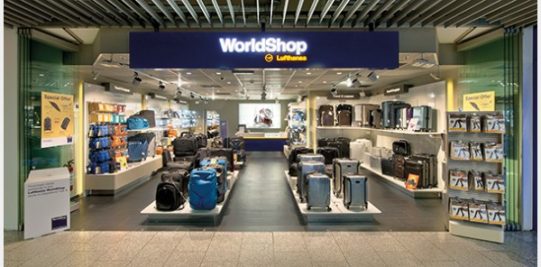Third-party redemptions as opportunity to engage members
 02 April 2019
02 April 2019
When loyalty managers are obliged to declare publicly why they offer third-party redemptions, the standard reply is to offer a wider choice to customers. Is this truly the honest answer in the case of airline and hotel programs?
We all know the reasons why loyalty programs – Frequent Flyer Programs or others – might be inclined to add award options by third-parties to the redemption mix: Lack of sufficient award capacity on their own company if they offer limited-capacity goods such as airline seats or hotel beds, inclusion of more appealing awards or strategic cross-selling considerations with partners. Frequent Flyer Programs would typically and almost exclusively fall into the first category. But too often, they actually fail to achieve the possible results since the issue is approached from a wrong angle – what could be corrected fairly easily.
So, while the underlying motivation might be clear, the publicly stated ambition to increase value for members through these redemption alternatives needs often to be questioned though when looking at how things are put in practice. As a matter of fact, operators of Frequent Flyer or hotel programs do actually have the advantage to be able to offer some of the most aspirational awards possible from a member’s perspective (travel-related awards), so looking beyond is something, which is already not a natural move. As comparison, if you are a member of a more or less boring retail program, maybe the opportunity to redeem even on some low-profile airline already seems appealing to members and may represent indeed an added value of program membership per se and the homework can be considered as completed by the program operator.
While the offering of such non-air redemptions has strongly grown at FFPs over the last few years, they are actually nothing new. Lufthansa, for instance, was certainly a pioneer in the area and must have offered a non-air redemption catalogue very much from the beginning of its Miles & More FFP, hence for more than two decades now. The concept was even taken to physical shop locations at its major airports. And it is actually an interesting case study since Lufthansa traditionally displays a retail price alongside a mileage price, letting anyone deduct very easily the (low) redemption value per mile such awards offer.
Which brings me to the real issue: We have two worlds colliding here. While most airlines would come to the same conclusion that such offerings have the potential to reward and engage members with small account balances, far away from any meaningful flight award threshold, or the super frequent flyer not caring about flight awards due to his life in the air, their main focus quickly turns to a pure liability management perspective. Often, these awards are priced in a manner that the redemption value per mile does not exceed half a (US/Euro) cent and compares hence rather poorly to flight redemptions, where members should definitely achieve a value of 1 cent or more, even without applying any too sophisticated techniques. The picture might be slightly different when money-can’t-buy experiences are offered, but also here, members can obviously attach a perceived value to the award. And the motivation for operators remains the same, to reduce the pressure on their own award inventory at a minimal price (which might be even zero cost, depending on the exposure the partner gets through such partnership).
Nevertheless, there is a certain pick-up rate for these offers since programs tend to get lucky with members not doing the maths (or not caring about it). But counting on the lack of knowledge of members in order to improve its balance sheet, is that really an honest strategy?
There are though exceptions in that area as well, not approaching the question from a pure loyalty management financial perspective, but from a wider corporate perspective – and realising different results. Take Japan Airlines as example: JAL Mileage Bank members in all regions can choose from a small, but relevant selection of third-party rewards, which are often simply offered in form of flexible vouchers. Be it a voucher for the bus shuttle in Narita, for rental location platform Stay Japan, for duty-free shopping in Honolulu, but also for Eurostar rides, entrance tickets to the Disneyland parks in the US or Amazon vouchers – these alternatives make often sense both for Japanese members at home and travelling abroad, but also for international members. And they are offered at redemption values approaching 1 (US/Euro) cent per mile and hence reaching the lowest redemption values you’d achieve when not redeeming air awards “properly”.
Such strategy makes it definitely easier for members not to consider such redemptions as act of desperation as it would be the case with many other programs. With a strict expiry policy in place in the Japan Airlines program, this seems like a smart way to manage customer engagement, although obviously at a higher cost than increasing the breakage rate.
Non-air redemptions do certainly have the potential to engage certain types of customers, and not necessarily limited to the poor and ultra-rich mileage collectors. But this potential risks being somewhat limited if programs operate this with a margin between 300 and 500%. 30 to 50% might still be a healthy margin: Although it would certainly have a negative short-term impact on the P&L of the loyalty program, it is also likely to have a longer-term impact on the loyalty of members since the currency would indeed become more lucrative to them.
While many programs have correctly identified the issue, still more need to come up with the right answer, which is though easy to understand. But it can only be accepted by loyalty managers looking at it from a loyalty angle, rather than through financial glasses.







